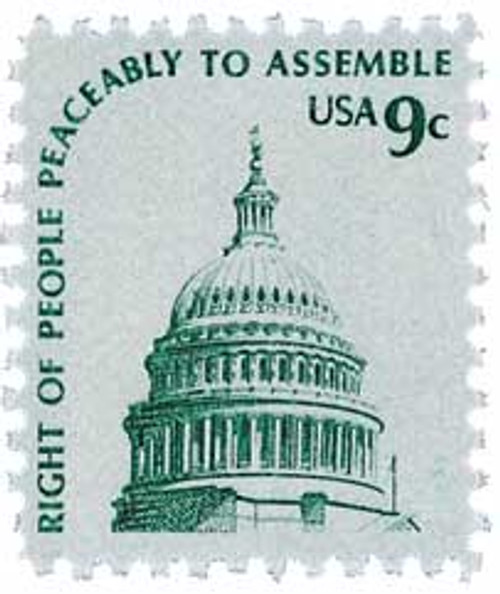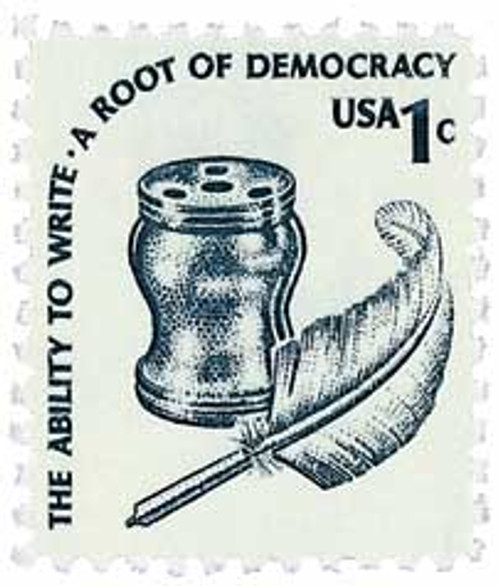
# 1615C FDC - 1978 8.4c Grand Piano, coil
Americana Series Coil Stamps
Perforation: 10 vertically
Birth Of Scott Joplin
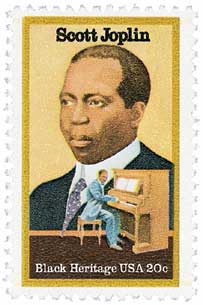
While Scott Joplin’s exact birthdate is unknown, it’s often considered to be November 24, 1868, as shown on his tombstone. And he was reportedly born in Texarkana, Texas. Other reports suggest he was born between late 1867 and early 1868 in Linden, Texas.
Joplin was the second of six children born to a former slave and free-born African American woman from Kentucky. His father worked on railroads while his mother was a cleaner, but both were also talented musicians. Joplin’s father played the violin and his mother sang and played the banjo. Because of this, Joplin received some musical training as a child and enjoyed playing the piano while his mother cleaned.
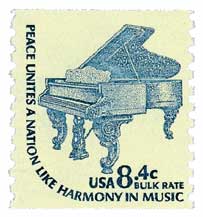
Joplin eventually met Julius Weiss, a German music professor who tutored the children of a prominent local family. Weiss was very impressed with Joplin’s talent, and taught him for free, acknowledging the family’s financial issues. For five years, Weiss taught Joplin to enjoy music as both art and entertainment. He also helped the family get a used piano for their home. Years later, when Joplin was a successful composer, he sent Weiss money.
As a teenager, Joplin performed in a vocal quartet and taught guitar and mandolin in his spare time. He’d also worked as a laborer with the railroad but eventually decided to give that up to become a traveling musician. Joplin then joined the Texarkana Minstrels and performed at a fund-raiser for a monument to Confederate President Jefferson Davis. Joplin struggled to find opportunities but found the most steady work in churches and brothels. It was during this time that he played a precursor to ragtime known as jig-piano. Joplin enjoyed combining western waltzes and marches with the rhythms of African American songs.
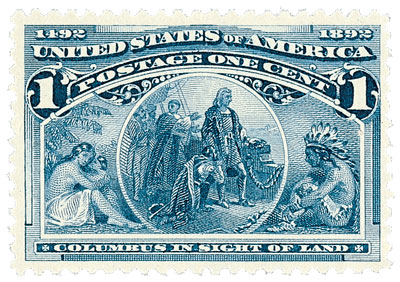
In 1893, Joplin joined millions of other Americans in Chicago at the World’s Fair. He formed a cornet band that played outside the fairgrounds. It was there that a fellow musician encouraged him to write down and publish his songs. Joplin was one of a number of musicians to bring ragtime to the fair. Up to that time, it was mostly heard in small cafes, saloons, and brothels. But the fair exposed millions of Americans and world travelers to ragtime and within a couple of years, it was a national craze. One newspaper described the sound as “a veritable call of the wild, which mightily stirred the pulses of city-bred people.”

After the fair, Joplin moved to Sedalia, Missouri, in 1894. He continued to work as a traveling musician with a six-piece dance orchestra. Joplin published his first two songs, “Please Say You Will” and “A Picture of Her Face” in 1895. When he wasn’t traveling, Joplin taught piano to a group of future ragtime composers and also studied at George R. Smith College.
Joplin published his first rag, “Original Rags,” in 1897 – the same year the first credited ragtime song was published by William Krell. Two years later, Joplin published one of his most famous songs, the “Maple Leaf Rag.” Within a few years, Joplin was dubbed the “King of ragtime writers” and his “Maple Leaf Rag” served as the inspiration for hundreds of other future songs.

Joplin moved to St. Louis in 1900, where he’d continue to have success as a composer. Here he wrote another famous work, “The Entertainer” as well as “March Majestic” and “The Ragtime Dance.” Next Joplin tried his hand at Opera. He created a 30-person opera company to perform, A Guest of Honor. The opera was based on a 1901 dinner hosted by Theodore Roosevelt for civil rights leader Booker T. Washington. However, Joplin was unable to pay the performers and the opera was closed and the score eventually lost.
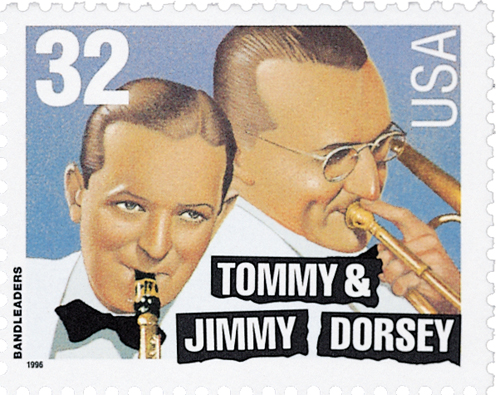
Joplin then moved to New York City to find a publisher for his opera Treemonisha. He failed to find a publisher and attempted to find backers, but was unsuccessful (though the opera was revived in the 1970s). Joplin worked tirelessly in his later years, even as illness took his mind. He was admitted to a mental institution and died there on April 1, 1917. He was buried in an unmarked grave for 57 years until it received a marker in 1974.
Click here to listen to some of Joplin’s music.
Americana Series Coil Stamps
Perforation: 10 vertically
Birth Of Scott Joplin

While Scott Joplin’s exact birthdate is unknown, it’s often considered to be November 24, 1868, as shown on his tombstone. And he was reportedly born in Texarkana, Texas. Other reports suggest he was born between late 1867 and early 1868 in Linden, Texas.
Joplin was the second of six children born to a former slave and free-born African American woman from Kentucky. His father worked on railroads while his mother was a cleaner, but both were also talented musicians. Joplin’s father played the violin and his mother sang and played the banjo. Because of this, Joplin received some musical training as a child and enjoyed playing the piano while his mother cleaned.

Joplin eventually met Julius Weiss, a German music professor who tutored the children of a prominent local family. Weiss was very impressed with Joplin’s talent, and taught him for free, acknowledging the family’s financial issues. For five years, Weiss taught Joplin to enjoy music as both art and entertainment. He also helped the family get a used piano for their home. Years later, when Joplin was a successful composer, he sent Weiss money.
As a teenager, Joplin performed in a vocal quartet and taught guitar and mandolin in his spare time. He’d also worked as a laborer with the railroad but eventually decided to give that up to become a traveling musician. Joplin then joined the Texarkana Minstrels and performed at a fund-raiser for a monument to Confederate President Jefferson Davis. Joplin struggled to find opportunities but found the most steady work in churches and brothels. It was during this time that he played a precursor to ragtime known as jig-piano. Joplin enjoyed combining western waltzes and marches with the rhythms of African American songs.

In 1893, Joplin joined millions of other Americans in Chicago at the World’s Fair. He formed a cornet band that played outside the fairgrounds. It was there that a fellow musician encouraged him to write down and publish his songs. Joplin was one of a number of musicians to bring ragtime to the fair. Up to that time, it was mostly heard in small cafes, saloons, and brothels. But the fair exposed millions of Americans and world travelers to ragtime and within a couple of years, it was a national craze. One newspaper described the sound as “a veritable call of the wild, which mightily stirred the pulses of city-bred people.”

After the fair, Joplin moved to Sedalia, Missouri, in 1894. He continued to work as a traveling musician with a six-piece dance orchestra. Joplin published his first two songs, “Please Say You Will” and “A Picture of Her Face” in 1895. When he wasn’t traveling, Joplin taught piano to a group of future ragtime composers and also studied at George R. Smith College.
Joplin published his first rag, “Original Rags,” in 1897 – the same year the first credited ragtime song was published by William Krell. Two years later, Joplin published one of his most famous songs, the “Maple Leaf Rag.” Within a few years, Joplin was dubbed the “King of ragtime writers” and his “Maple Leaf Rag” served as the inspiration for hundreds of other future songs.

Joplin moved to St. Louis in 1900, where he’d continue to have success as a composer. Here he wrote another famous work, “The Entertainer” as well as “March Majestic” and “The Ragtime Dance.” Next Joplin tried his hand at Opera. He created a 30-person opera company to perform, A Guest of Honor. The opera was based on a 1901 dinner hosted by Theodore Roosevelt for civil rights leader Booker T. Washington. However, Joplin was unable to pay the performers and the opera was closed and the score eventually lost.

Joplin then moved to New York City to find a publisher for his opera Treemonisha. He failed to find a publisher and attempted to find backers, but was unsuccessful (though the opera was revived in the 1970s). Joplin worked tirelessly in his later years, even as illness took his mind. He was admitted to a mental institution and died there on April 1, 1917. He was buried in an unmarked grave for 57 years until it received a marker in 1974.
Click here to listen to some of Joplin’s music.











